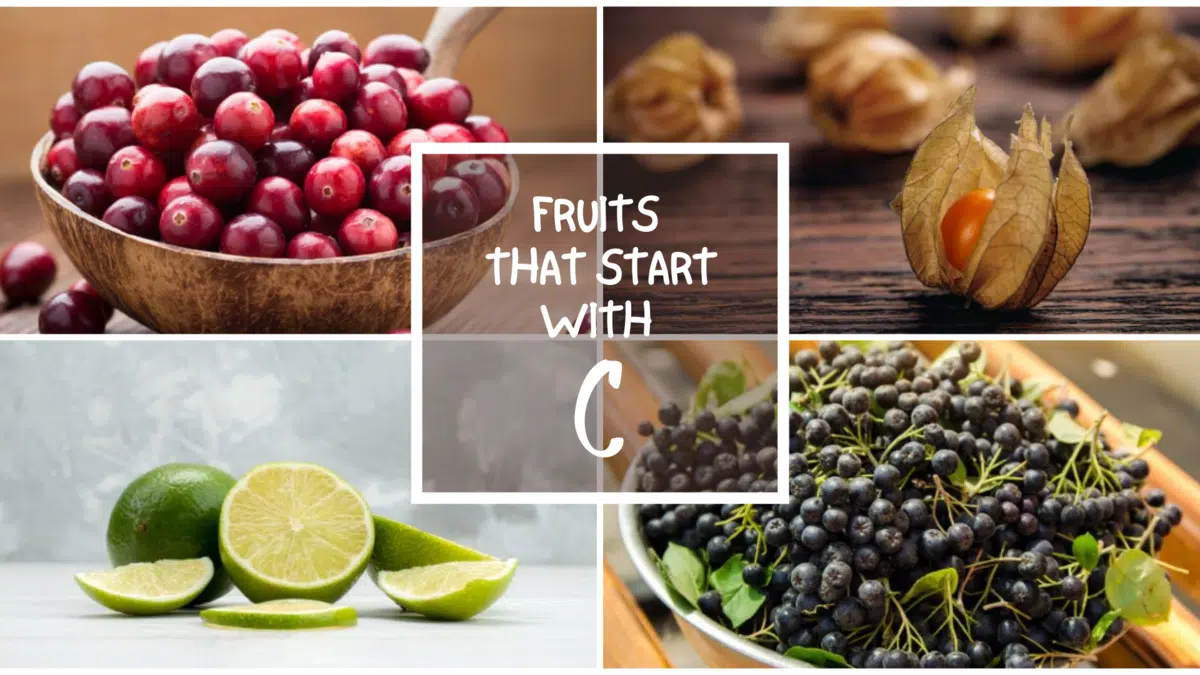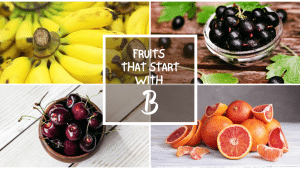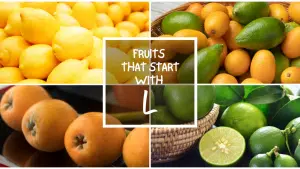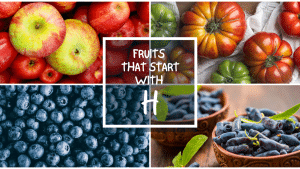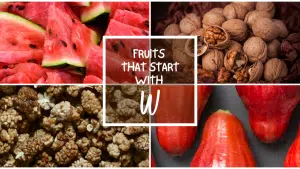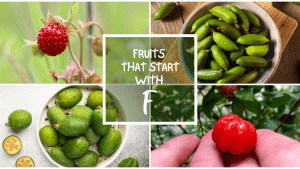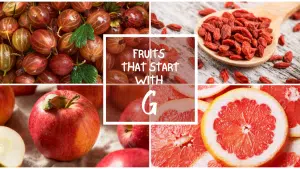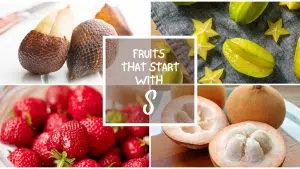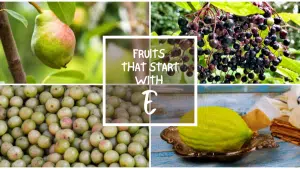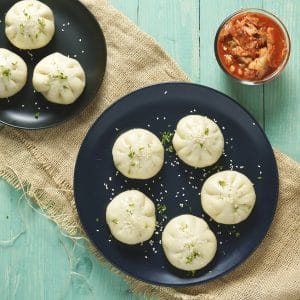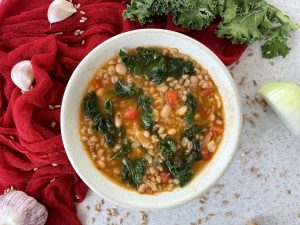All The Fruits That Start With C
Important Note: When you buy through our links, we may earn a commission. As an Amazon Associate we earn from qualifying purchases. Content, pricing, offers and availability are subject to change at any time - more info.
If you’re riding the alphabet fruit train, welcome to the letter C. The fruits listed herein run the gamut from berries to melons and domestic to exotic. Whether you’re looking for new ways to enrich your diet or just a foodie on a mission, you’ll undoubtedly enjoy trying some of these awesome fruits. Ranging in flavor profiles from super sweet and tropical to mild and sour, there’s something for every palette on the C list.
- Calamansi
- Calamondin
- Cantaloupe
- Cape Gooseberry
- Carob
- Cedar Bay Cherry
- Cempedak
- Chayote
- Cherimoya
- Cherry
- Chokeberry
- Clementine
- Cloudberry
- Cluster Fig
- Cocoplum
- Cranberry
- Crowberry
- Cucumber
- Coconut
- The Final Letter
Calamansi

Sometimes referred to as the Philippine lime, the calamansi is scientifically named the Citrus × macrocarpa. The calamansi is a citrus hybrid that primarily comes from the Philippines, however, neighboring countries such as China and Taiwan also cultivate the fruit. Although it’s not sold in its whole form in the US, calamansi juices are now domestically available.
Similar in size, shape, and color to lime, the calamansi has a bright green, inedible peel, and a pulpy inside. The pulp of this citrus fruit is both sour and sweet, however, not quite as sour as a standard lime. The sweet undertones of the calamansi most closely taste like an orange. Though calamansi can be enjoyed whole, it’s most commonly consumed in its juiced form. Other preparations include calamansi marmalade, as a marinade for meats, and incorporated into desserts.
Finally, like other citrus fruits, the calamansi is known to lower cholesterol, improve immunity, and serve as an antioxidant. Notably, this fruit is packed with Vitamin C.
Calamondin
Technically known as Citrofortunella macrocarpa, this hybrid citrus fruit originated in China and spread to other parts of the world including North America. Cultivated in sub-tropical climates such as Florida, calamondin is a tree fruit that closely resembles the standard orange. Besides being readily available in warm-climate grocery stores, home growers can easily plant a calamondin tree if their clime is suitable for its growth.
Calamondin is similar in size, shape, and color, to a standard orange; its exterior peel is inedible, though it can be zested, and its pulp is best described as juicy, sweet, and tangy; it’s commonly enjoyed whole. Additionally, calamondins are often used for juicing, creating essential oils, and as the star of their very own pie recipe. Calamondin is a healthy snack that’s rife with fiber, potassium, vitamin C, and calcium.
Cantaloupe
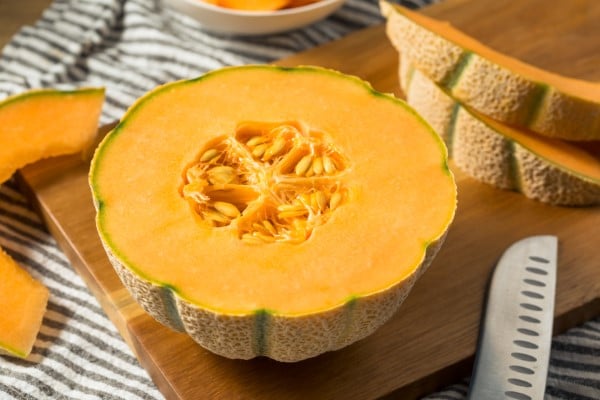
Although its exact origin is unknown, it’s likely that the cantaloupe, or the Cucumis melo var. cantalupensis, originated in either South Asia or Africa. Following its introduction in Europe, the cantaloupe made its way to North America sometime in the late 1800s. Today, cantaloupe is a commercial crop that can be purchased at nearly any grocery store or farmstand in the US. The peak season for cantaloupe cultivation is early to late summer.
Cantaloupe is a large, round melon that’s approximately six-and-a-half inches in diameter when fully ripe. The rind of the cantaloupe is inedible but the flesh is sweet, juicy, hearty, and musky; it’s the color of orange sherbet. Although cantaloupe is most commonly eaten fresh, other recipes or pairings that are common include wrapped with prosciutto, in fruit salad, and as the star of its very own sorbet flavor. Finally, cantaloupe is a good addition to your diet as it’s high in vitamin A as well as lutein and carotenoid which are beneficial to eye health.
Cape Gooseberry
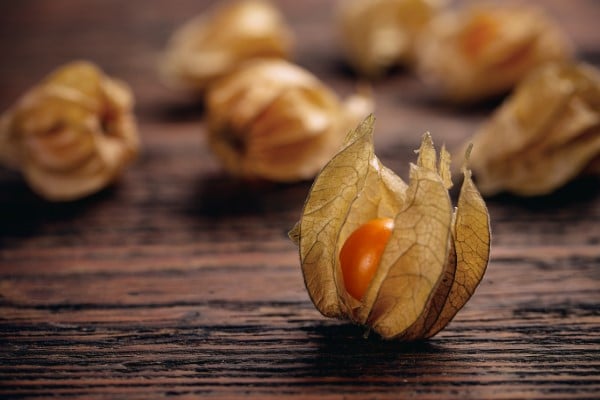
The cape gooseberry is a small orange berry that hails from the warm climates of places like South Africa, South America, Central America, and beyond. It also happens to be known by other names such as Rasbhari, golden berries, and ground berries, but its scientific moniker is Physalis peruviana. Although it’s not a common commercial fruit in the US, it can be purchased throughout the US at specialty grocers.
These tasty little bites of juicy fruit are zingy and subtly sweet. With tropical undertones, the cape gooseberry has the zing of a lemon but the sweetness of pineapple. These yummy bite-sized fruits can be enjoyed whole or as an addition to a sweet or savory dish such as salads or chutneys. The cape gooseberry is also found in recipes like relishes, salsas, or even dipped in chocolate. Lastly, cape gooseberries are wonderful carriers of nutrients such as total phenols, ascorbic acid, carotenoids, and vitamin A.
Carob
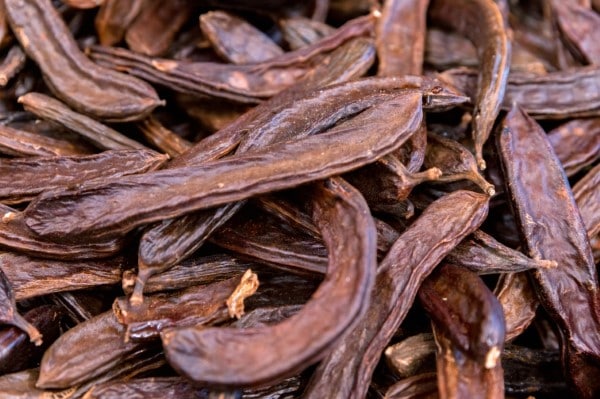
Ceratonia siliqua, better known as carob, is a tree fruit that’s indigenous to the Eastern Mediterranean. Arriving in North America in 1854, carob was popularly marketed as a chocolate substitute in the 70s and 80s. In those days, it was most readily found in health food stores, however, today, you can purchase carob in most large grocery stores in the US.
Carobs are pea-sized bits that grow in pods; they look a whole lot like chocolate chips. Although they were commonly marketed as a chocolate substitute, they have an earthy, subtly sweet flavor that tastes a bit like caramel. There are tons of recipes that call for carob chips, most of which are sweet treats and confections; some include carob-glazed donuts, carob fudge, hot carob, and carob mousse among others. Lastly, carob contains many healthy nutrients such as D-Pinitol which is known to aid in diabetic insulin regulation.
Cedar Bay Cherry
This variety of cherry is a beach variety that is native to Australia. Also known by the nicknames beach cherries, bushfood, and bush tuckers, they are known by the scientific community as Eugenia reinwardtiana. Thriving in coastal and rainforest climates, the cedar bay cherry can also be found in parts of Indonesia and the Pacific Islands. Though these cherries are not available commercially in the US, home growers can procure seedlings online.
Cedar bay cherries are small, round, and firm; they have a sweet berry flavor with hints of grape. They are juicy and have a pit at their center; they’re also one of Australia’s most popular fruits to eat whole. Like many varieties of cherries, this variety has found its way into many sweet recipes such as pie fillings and jams. Best of all, cedar bay cherries are a great source of health-promoting antioxidants.
Cempedak

This unique fruit is a relative of the jackfruit; it is native to Southeast Asia. Cempedak is a tropical tree fruit whose scientific name is Artocarpus integer. The cempedak flourishes in hot and humid tropical climates like those of Thailand, Myanmar, and Cambodia. Unfortunately, this fruit can not be purchased commercially in the US.
Similar in taste to durian, the cempedak has a strong, pungent smell reminiscent of jackfruit and breadfruit. Additionally, the hard shell is filled with tasty pulp and edible seeds. Sugary, sweet, and fibrous, the pulp of the cempedak tastes a bit like honey. Although it’s commonly eaten whole, this fruit has found its way into sweet recipes such as ice creams, custards, and fritters. Of note, the cempedak is rich in vitamin A and high in protein, phosphorus, and calcium.
Chayote
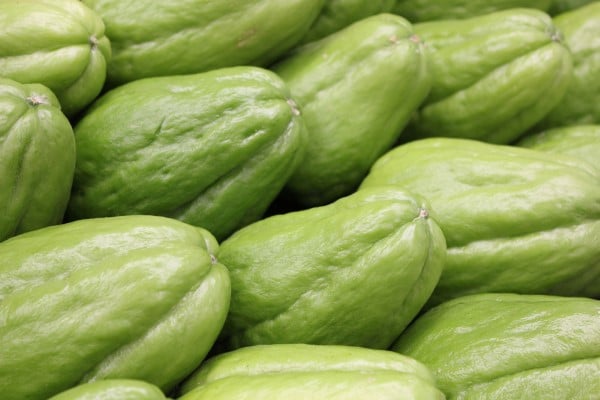
A relative of the gourd family, the chayote is a green, bumpy fruit that hails from South America. Though it became popularized by the Mayans and the Aztecs, it eventually made its way to the Southwestern US where it’s commercially cultivated today. Although the chayote is more easily found in states like Florida, California, and Louisiana, it can be easily purchased from online retailers too.
This small gourd is the size and texture of a balled-up fist and has a crisp apple-like texture beneath its hard, inedible shell. Likened in taste to a blend between an apple and a cucumber, the chayote is mildly sweet and refreshing. Chayote can be eaten raw and is commonly added to salads and slaws, however, it’s versatile and can be cooked and prepared as you would other squashes. Chayote is a nutritious fruit comprised of dietary fiber, vitamins, and antioxidants; it’s also been linked to cardiovascular, diabetic, and obesity health.
Cherimoya

Cherimoya, or Annona cherimola, was first founded in the South American Andes Mountains. This fruit thrives in tropical settings and can be found in Central America, Southern California, Australia, and the Mediterranean today. California commercially cultivates cherimoya in the US and distributes it to all 50 states. As such, cherimoya can be found all over the US.
Cherimoya has a hard exterior that’s similar in texture and color to a green apple; the shape and size, however, are reminiscent of an artichoke. The flesh of the cherimoya is similar in texture to mango and the taste is very sweet and innately tropical. Except for the seeds, cherimoya can be enjoyed in its whole form but it’s also common to eat it as a custard or sorbet or as a sweet additive to savory dishes. High in vitamins, minerals, and dietary fiber, eating cherimoya is a great way to balance your diet.
Cherry

Prunus avium, better known as the cherry, is a tree fruit that comes from western Asia and Europe. Today, the cherry is commercially grown all over the continental US, however, the biggest producers are California, Oregon, and Washington. Peak cherry-picking season is mid-spring to mid-summer and they can be purchased commercially at most grocery stores in the US.
Comparable in size to a grape, cherries are deep red in color, are commonly eaten whole, and have an inedible pit. They have a sweet flavor that has hints of nuttiness and cinnamon. Besides eating them whole, cherries are often made into jams, reductions, and pie fillings. Notably, cherries are a low-calorie snack that is high in fiber, vitamins, and minerals.
Chokeberry
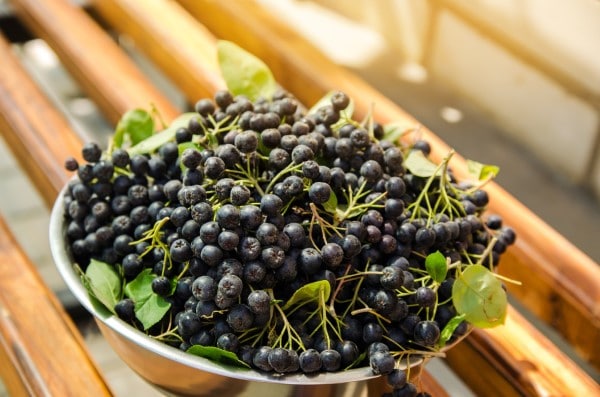
These dark, small berries, that are native to both Europe and North America, also known as Aronia, grow on shrubs. Available domestically at specialty grocery shops, the chokeberry can grow in a wide range of climates. Although chokeberries are grown year-round, they are best when harvested in late summer to early fall.
Chokeberries have a strongly tart flavor and dry texture making them less desirable as a fruit that’s eaten whole. However, they’re a popular berry to reduce into jams, juices, purees, and pie fillings or sprinkled upon sweet cereals and oatmeals. Lastly, chokeberries are known to have properties beneficial to supporting optimal health. Chokeberries are rich in polyphenols and antioxidants which are integral to a well-balanced diet.
Clementine

These small, seedless oranges likely originated in China as a close relative or hybrid of the mandarin variety of oranges. Today, the Citrus × Clementina is grown in tropical and subtropical climates like Spain and California. As a result of their domestic cultivation, clementines are readily available at major grocers throughout the continental US.
Clementines are similar in size and shape to lime; they are orange in color. Clementines have easy-to-peel rinds that are inedible with a sweet, juicy pulp that’s best-eaten whole; they are also commonly juiced and have a bright, citrusy aroma. These sweet citrus fruits lend themselves to recipes such as cakes, granitas, and salads. A good source of magnesium, calcium, potassium, antioxidants, and vitamin C, clementines are a great addition to a well-rounded diet.
Cloudberry

The cloudberry, or rubus chamaemorus, is native to Arctic and subarctic climates. Cloudberries can be found in North America in places such as Canada, Greenland, Minnesota, New Hampshire, and Maine. Cloudberries are not sold commercially in the US, but if you’re willing to seek them out in the wild in the regions they’re known to grow, you too can get your hands on them.
Cloudberries are similar in size and shape to raspberries but are a vibrant yellow-orange in color. These bite-sized fruits have a slightly sweet and slightly sour taste also similar to raspberries. They are juicy fruits that can be eaten whole; they are said to leave a slightly floral aftertaste. A few favorite recipes that feature this tasty fruit include cloudberry jam, cloudberry cream pie, and cloudberry cake. With high protein, calcium, and iron ratios, the cloudberry is a wonderful addition to a well-rounded diet.
Cluster Fig
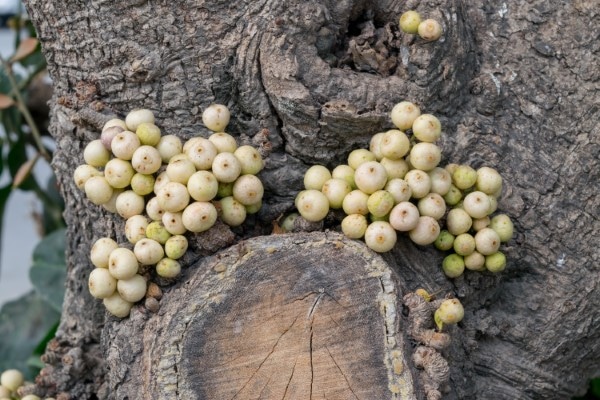
Ficus racemosa, better known as the cluster fig, was first founded in Australia and Asia. Today, they are found in other subtropical and tropical countries like India, Myanmar, Malaysia, Africa, and beyond. Cluster figs, however, are not cultivated in the US. Home growers can try their hand at growing these trees, so long as they live in a climate suitable for their growth, by purchasing seedlings online.
Cluster figs are small round fruits, typically ranging from two to five centimeters in diameter, that grow in clusters of up to 20 fruits. Cluster figs are mildly sweet and have a smell similar to apples. They are commonly eaten whole or sliced and added to salads; additionally, they can be reduced to jams or incorporated into curry dishes. Cluster figs are rife with nutrients such as fiber, potassium, and iron; they’re known to improve overall gut health.
Cocoplum
The cocoplum, whose practical name is Chrysobalanus icaco, is indigenous to parts of central and south Florida. Flourishing in the beach dunes along the coast, these wild berry fruits are not cultivated commercially in the US. Nevertheless, home growers can easily plant seedlings to grow these tree fruits at home with the right growing conditions.
Varying in a gradient of colors from white to dark plum, the cocoplum is a round fruit similar in size to a standard plum. Commonly eaten whole or in preserves, the cocoplum is soft and mildly sweet; its nutty seed and soft skin are both edible too. Coco plums are a tasty and nutritious snack; they are packed with calcium, vitamin C, and iron.
Cranberry
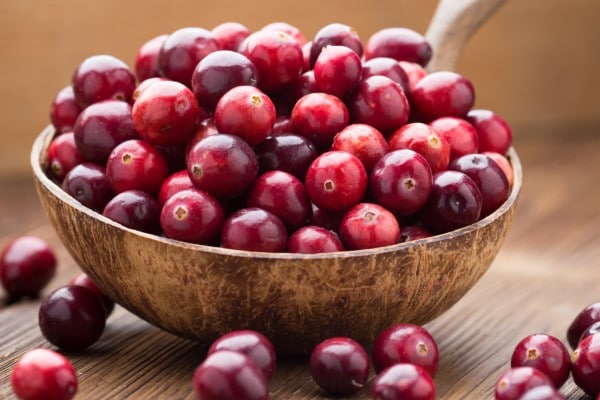
The Vaccinium Oxycoccus, or cranberry, was first discovered in the Northeast region of North America. Known to grow in parts of Massachusetts, New Jersey, Washington, and Oregon, cranberry is a popular vine berry. Harvested from bogs from mid-fall to early winter, cranberries are commercially available throughout the US.
Similar in size and shape to a blueberry, cranberries are a deep red in color but have a very firm shell. They are not commonly eaten whole because they are very tart to taste. However, cranberries are often juiced or reduced into sauces, jams, or preserves; furthermore, they are a popular berry used in sweet confections. Known to reduce the risk of urinary tract infections, cranberries are rich in A-type proanthocyanidins.
Crowberry
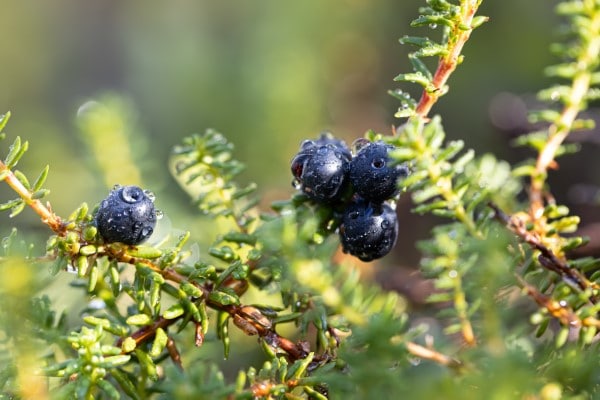
The Empetrum nigrum, colloquially known as the crowberry, is a flowering plant fruit that is native to Alaska. Thriving in subarctic climes, the crowberry is also known to grow in parts of Asia and Europe as well as Canada. Although these are commercially available in some parts of the US, they’re not so easy to find. They can, however, be purchased from online retailers if they’re not available in your region.
Crowberries look a lot like blueberries in shape, size, and color. These berries have an unpleasant smell that’s likened to turpentine and the taste is sour and acidic. As a result of their sour taste, they’re rarely eaten whole and are, instead, juiced and blended with other fruits or made into wines or jellies. A great way to supplement your diet with nutrients such as vitamin C, manganese, and copper, crowberries are worth a try.
Cucumber
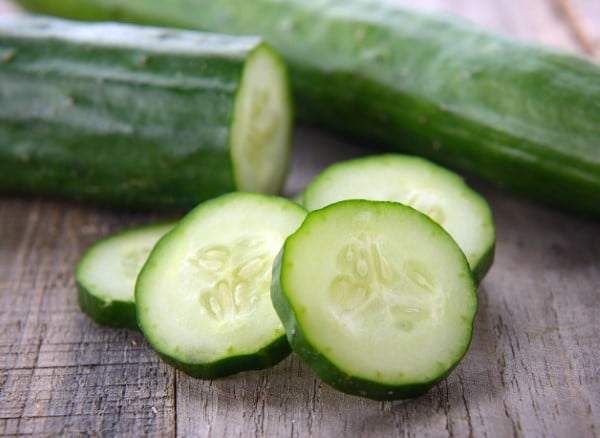
The Cucumis sativus, better known as the cucumber, is a member of the melon family and it hails from ancient Egypt. Now, one of America’s most popular fruits, cucumbers can be purchased nearly anywhere in the US. Cucumbers are a summer plant that bloom in the late summer months.
Similar in texture to honeydew but long and cylindrical in shape, cucumbers are dark green fruit whose skin, flesh, and seeds are all edible. A favorite snack to enjoy whole or in salads, cucumbers are versatile. Whether garnishing a mixed salad or starring in its very own salad, cucumbers taste great with your favorite salad dressing. They’re also popularly prepared pickled to eat whole or as a garnish to sandwiches or burgers. Finally, cucumbers are a nutritious snack fraught with vitamins A, K, B6, and B12 as well as carotene, lutein, and folate.
Coconut

The Cocos nucifera, commonly known as the coconut, is a tropical tree fruit indigenous to Southeast Asia. Dependent on a tropical climate in order to flourish, the only place in the US that commercially grows coconuts is Florida. However, coconuts are imported to the US from all over the world and they can be found domestically in most grocery stores.
Coconuts have hard, fibrous shells that must be cracked to access the meaty white flesh on its inside. Coconuts are filled with drinkable water and flesh that is edible. Coconuts smell and taste tropical with hints of nuttiness and vanilla and are overall quite sweet. Coconuts are delicious to eat whole but can be found in many sweet recipes including yogurts, cakes, bars, shrimp breading, and more. Coconuts are high in fiber, potassium, and iron among other nutrients and therefore are a great addition to your diet.
The Final Letter
Hopefully, by making it to the end of this list of delicious C fruits you’re feeling inspired to try a few new things. Whether looking to broaden your dietary intake or enhance your nutrient consumption, there is a bevy of nutrient-rich and flavorful profiles represented herein. Consider using this rundown as a checklist of fruits worth incorporating into your diet.
